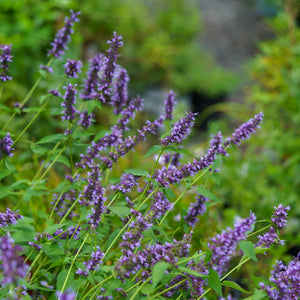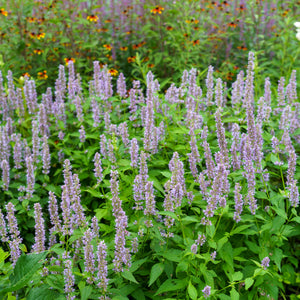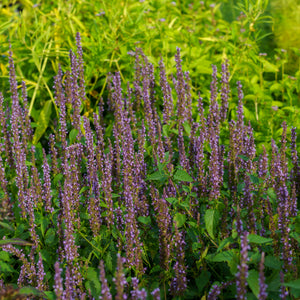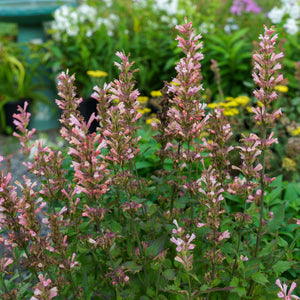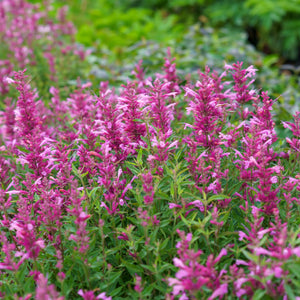The Agastache Guide
Agastache, commonly known as hyssop or hummingbird mint, is a genus of aromatic perennials prized for their long-lasting blooms, fragrant foliage, and exceptional drought tolerance. These hardy plants are native to North America and Asia, thriving in dry, sunny environments with well-draining soil. Their vibrant, spiky flower clusters bloom from mid-summer through fall, attracting pollinators such as bees, butterflies, and hummingbirds. Whether planted in borders, containers, or rock gardens, Agastache adds height, texture, and color to the landscape. Here's everything you need to know about growing and caring for Agastache.
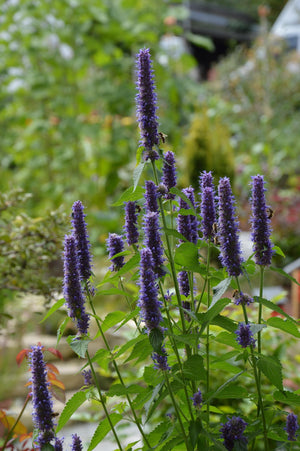
About
Agastache belongs to the mint family (Lamiaceae) and includes more than 20 species, many of which are cultivated for their ornamental and medicinal properties. These perennials are known for their upright growth habit, producing tall spikes of tubular flowers in shades of blue, purple, pink, red, orange, and yellow. Their aromatic foliage releases a pleasant licorice or anise scent when brushed against or crushed, making them a favorite in sensory gardens.
The name Agastache is derived from Greek, meaning "many spikes," referring to the densely packed flower clusters that persist throughout the growing season. Some of the most popular species include Agastache foeniculum (Anise Hyssop), Agastache rugosa (Korean Mint), and Agastache aurantiaca (Orange Hyssop). Modern cultivars such as Agastache 'Blue Fortune', Agastache 'Kudos Red', and Agastache 'Mango Tango' offer diverse colors and compact growth habits suited to various garden styles.
Beyond their beauty, Agastache plants serve as valuable pollinator magnets, providing a continuous nectar source for hummingbirds, bees, and butterflies. Their drought resistance and deer-resistant properties make them a reliable choice for xeriscaping and low-maintenance landscapes. Whether used as a focal point, in mass plantings, or as part of a pollinator-friendly garden, Agastache enhances outdoor spaces with its striking form and lively blooms.
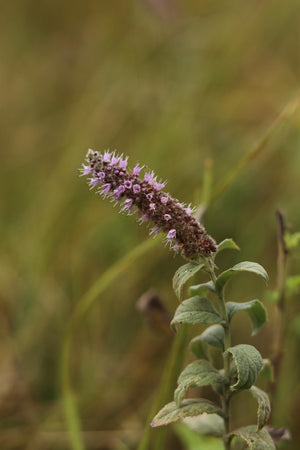
PLANTING
- USDA Hardiness Zones: Most Agastache species thrive in Zones 5-10, with some varieties, such as Agastache foeniculum, tolerating colder climates down to Zone 4.
- Soil: Prefers well-drained, sandy, or loamy soil with moderate fertility. Avoid heavy clay or waterlogged conditions, as excessive moisture can lead to root rot.
- Sunlight: Requires full sun for optimal growth and flowering. At least six to eight hours of direct sunlight daily ensures vigorous blooms and compact growth.
- Watering: Drought-tolerant once established. Water deeply but infrequently, allowing the soil to dry between waterings.
- Spacing: Space plants 12-24 inches apart to allow for proper air circulation and prevent fungal diseases.
- Planting Time: Best planted in early spring or fall when temperatures are moderate, promoting strong root development before extreme summer heat or winter cold.
To plant Agastache, dig a hole slightly larger than the root ball, place the plant in the hole, and backfill with soil. Water thoroughly after planting to help the roots establish. Mulching around the base of the plant helps retain moisture and suppress weeds but should be kept away from the crown to prevent rot.
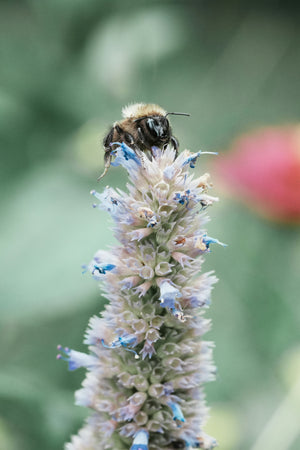
CARE
- Watering: Once established, Agastache requires minimal watering, making it ideal for drought-prone areas. Deep, occasional watering promotes deep root growth and enhances plant resilience.
- Pruning: Deadhead spent flowers regularly to encourage continuous blooming. In late fall or early spring, cut back stems to a few inches above ground level to promote healthy new growth.
- Fertilizing: Agastache thrives in lean soil and does not require heavy feeding. A light application of compost or a balanced, slow-release fertilizer in spring supports healthy growth.
- Pests & Diseases: Generally pest-free but can occasionally attract aphids or spider mites. Powdery mildew may develop in humid conditions; ensuring good air circulation helps prevent issues.
- Dividing: Divide plants every 3-4 years in early spring to rejuvenate growth and prevent overcrowding. This also provides an opportunity to propagate new plants.
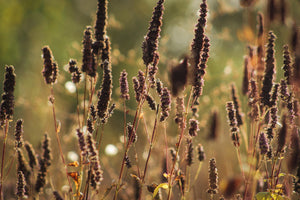
HOW TO USE
Agastache’s versatility allows it to be used in a variety of garden designs:
- Focal Point: Tall varieties like Agastache 'Blue Fortune' and Agastache 'Black Adder' create dramatic focal points in mixed borders.
- Pollinator Gardens: The long-lasting, nectar-rich flowers attract hummingbirds, bees, and butterflies, making Agastache an essential plant for wildlife-friendly landscapes.
- Herbal & Sensory Gardens: The fragrant foliage of Anise Hyssop (Agastache foeniculum) is used in teas and culinary applications, while the licorice scent makes Agastache an engaging plant for sensory gardens.
- Dried Flowers & Cut Arrangements: The tall flower spikes retain their shape and color when dried, making them an excellent choice for dried floral arrangements.
- Xeriscaping & Low-Water Landscapes: Due to its drought tolerance, Agastache is a reliable option for water-wise gardening and rock gardens.
- Container Planting: Compact cultivars like Agastache 'Kudos Coral' and Agastache 'Poquito Dark Blue' thrive in pots and patio containers, adding vertical interest to small spaces.
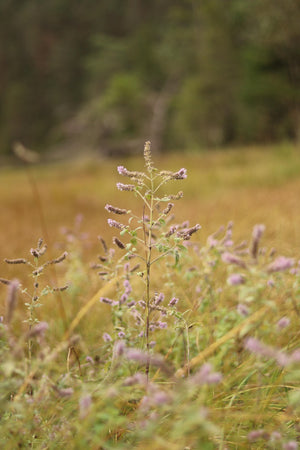
Common Questions
- Is Agastache a perennial? Yes, Agastache is a hardy perennial in most climates, returning year after year with minimal maintenance.
- Is Agastache deer-resistant? Yes, Agastache is highly deer-resistant due to its aromatic foliage, which deer tend to avoid.
- Do you cut back Agastache in the fall? You can cut Agastache back in late fall after the first frost, but leaving the stems over winter can provide habitat for beneficial insects.
- Does Agastache spread? Some Agastache species self-seed, but they are generally clump-forming and do not spread aggressively.
- Is Agastache toxic to dogs? No, Agastache is not considered toxic to dogs, though ingestion in large quantities may cause mild digestive upset.
- Is Agastache toxic to cats? No, Agastache is not toxic to cats and is safe for pet-friendly gardens.
- Are Hyssop and Agastache the same thing? While Agastache is commonly called hyssop, true hyssop (Hyssopus officinalis) is a different plant in the mint family with medicinal uses.
- Can you divide Agastache? Yes, Agastache can be divided every 3-4 years in early spring to rejuvenate plants and propagate new ones.
Conclusion
Agastache is a stunning and low-maintenance perennial that enhances any garden with its fragrant foliage, vibrant flowers, and pollinator-friendly nature. Whether planted as a focal point, in mass groupings, or in containers, Agastache provides long-lasting color and ecological benefits. With a wide range of cultivars, including Agastache 'Blue Fortune', Agastache 'Mango Tango', and Agastache 'Kudos Red', there's a perfect variety for every landscape. Explore our selection to find the best Agastache for your garden and enjoy its beauty season after season.
The Agastache Collection
Sold Out
Sold Out
Sold Out
Sold Out

